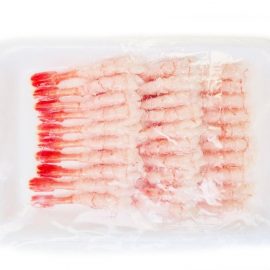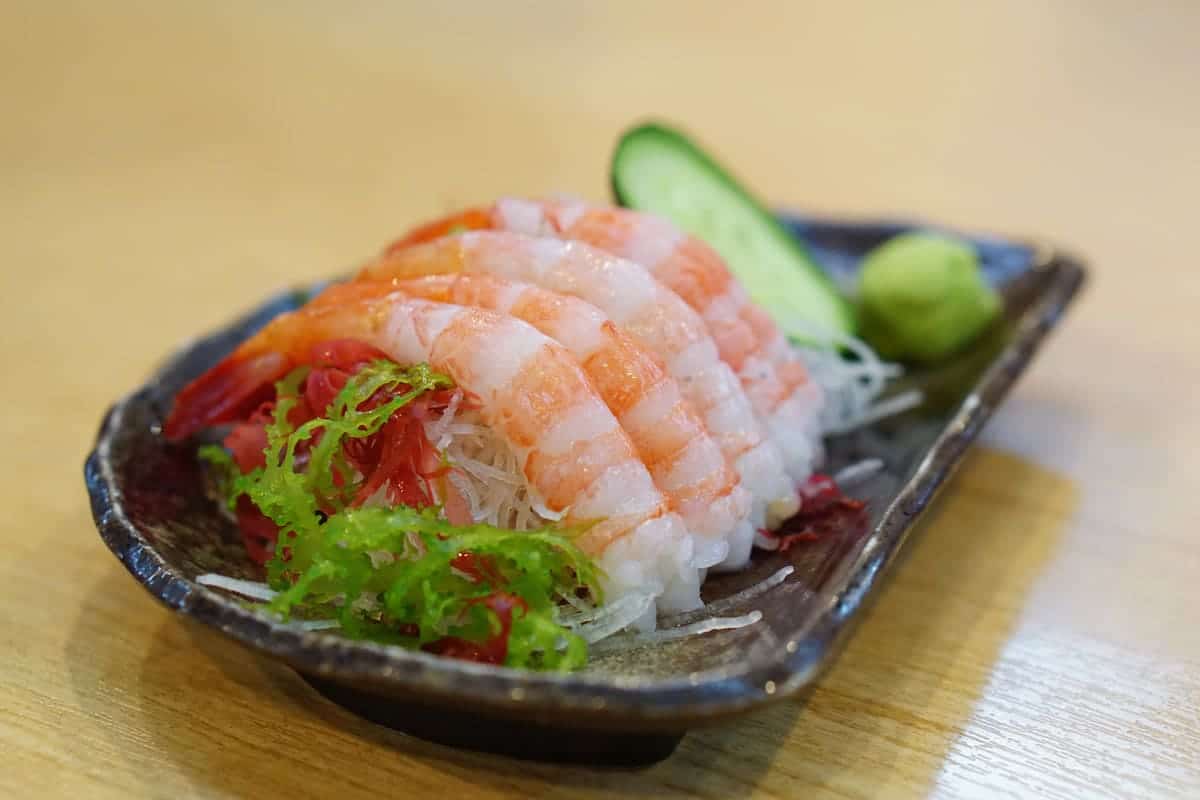
Introduction
Amaebi, sweet shrimps or spot prawns, has enticed seafood lovers worldwide with its succulent flavour and beautiful texture. From Tokyo to Los Angeles, Amaebi is a beloved fresh and raw delicacy that comes in various forms, from raw to cooked.
Amaebi is a species of shrimp found off the coasts of Japan and California. The pink shrimp are known for their delicate flesh and sweet taste; they are usually served raw as sushi or sweet shrimp sashimi. Cooked amaebi can also be found in dishes such as tempura or karaage.
Amaebi can also be found in Mexican ceviche or Chinese stir-fry recipes.
Throughout its history, amaebi has been enjoyed by many worldwide cultures that have developed unique recipes featuring this delectable crustacean. Whether you prefer your amaebi raw or cooked, there’s something for everyone on this delicious menu!
Description & Characteristics
Amaebi is a species of small shrimp found in the coastal waters of Japan and some other parts of East Asia. The scientific name for this species is Pandalus borealis, which belongs to the family of Pandalidae.
This species has a long body with a pair of large pincers on its head, and its colour can range from white to pinkish-red. The size of an adult amaebi is typically between 1/2 inch (1 cm) in length; however, they can grow up to 3 inches (7 cm).
Their shells have a firm texture, and they have long antennae that extend outwards from their body. The head has two eyes at the top, with five legs extending downwards from the thorax region.
Their first stage of life is spent as males before they transform into females, making them hermaphrodites. Its tiny, male form, at its sweetest. Because of their small size, these sweet shrimp are usually served in pairs. During its female form, while bearing eggs, it is only suitable for cooking in Japanese cuisine, as the eggs enhance the sweet flavor.
They are mainly harvested for consumption in Japan, which is considered a delicacy due to their sweet flavour and tender texture.
The amaebi have become an increasingly popular seafood item in recent years due to their high nutritional content, including lean protein, calcium, iron, vitamins A & D and omega-3 fatty acids.
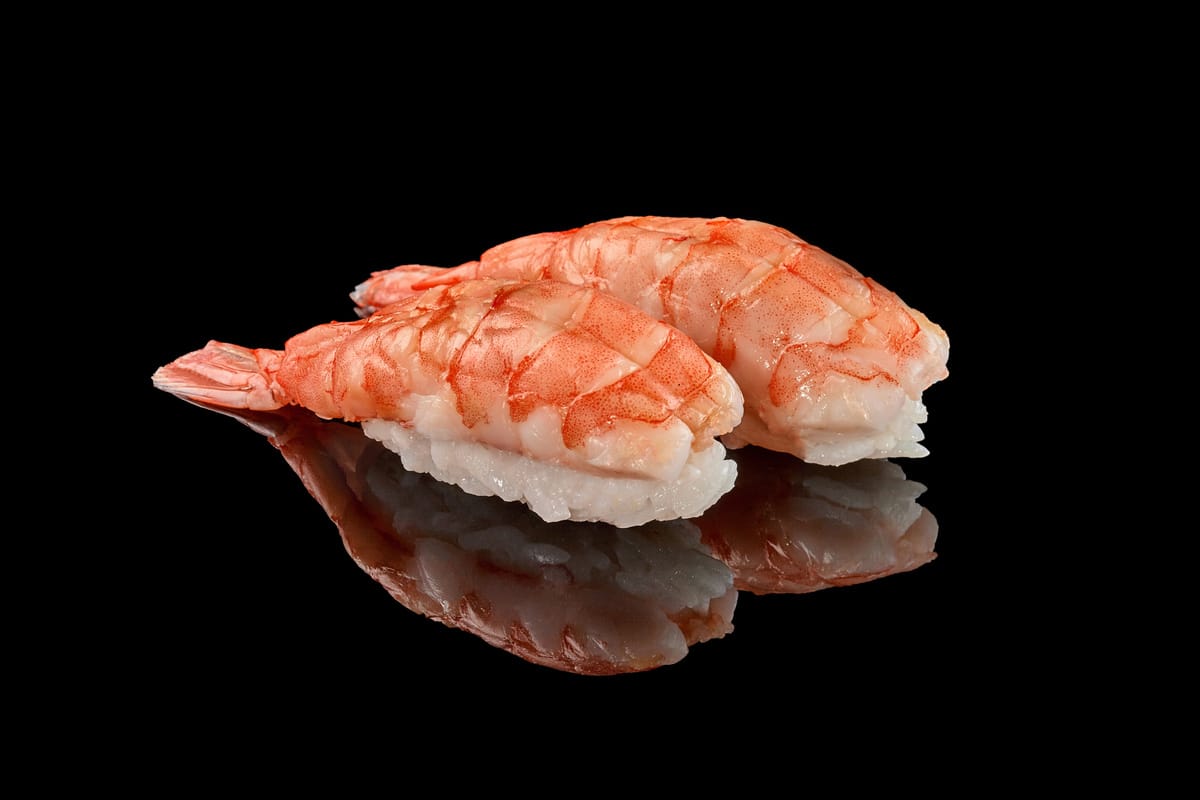
Etymology
The etymology of the term ‘amaebi’ is derived from the Japanese word for shrimp, ‘ebi’. The term combines two characters: ‘ama’, meaning sweet, and ‘ebi’, meaning shrimp. In Japan, amaebi are traditionally served as a sweet dish, which has become popular in recent years. The term amaebi is also used to refer to other types of shrimp that resemble the sweet shrimp found in Japan.
Biology
Amaebi have a typical caridean morphology that consists of a soft exoskeleton composed of chitin and proteins. This is covered by a thin layer of epidermal mucus that helps protect them from desiccation and predators. The eyes are stalked, and two pairs of antennae are on their head.
Amaebi feeds primarily on diatoms, detritus, planktonic crustaceans, and plant material. They are filter feeders that use their modified maxillipeds (mouthparts) to extract food particles from the water column. They can also burrow into the sediment for food sources such as benthic organisms and diatoms.
Habitat And Distribution
Amaebi, or sweet shrimp, are a species of small, saltwater shrimp found in temperate and tropical waters worldwide.
Amaebi is found in shallow waters near shorelines throughout the Atlantic Ocean and the Caribbean Sea. They inhabit sandy or muddy bottoms, feeding on various benthic organisms such as molluscs and other crustaceans. Additionally, they can be found in estuaries, bays, lagoons, and mangroves. Some species live in deeper waters up to 200 meters deep.
Amaebi have also been introduced to parts of the Pacific Ocean and Mediterranean Sea via aquaculture practices.
Due to their wide range of habitats and a high tolerance for varying salinity levels, amaebi can often be seen in locations with large human populations, such as Tokyo Bay or the San Francisco Bay Area. As a result of this adaptability and availability, amaebi are popularly used for food domestically and internationally.
Amaebi’s Diet
The diet of amaebi is comprised mainly of phytoplankton, zooplankton, small benthic invertebrates, and other organisms found in the shallow coastal waters they inhabit. They will also scavenge on dead organic matter or feed on detritus that has settled to the bottom of the sea floor.
Amaebi prefers warmer temperatures and typically feeds during the daytime when it is bright outside. Additionally, they may prey upon small bivalves such as clams and mussels, worms, insect larvae, and other organisms.
Amaebi is a significant source of nutrients for many other species in their ecosystem due to their feeding habits. In particular, they provide substantial energy for many fish species that rely on them as a food source. This has increased the population size of certain fish species, which has positively impacted local fisheries.
Life Cycle of Amaebi
The life cycle of the amaebi or sweet shrimp begins with a larval stage in which it hatches from an egg and then spends time as free-floating plankton. During this stage, the larva will feed on tiny particles of planktonic food, such as diatoms and dinoflagellates.
After a few weeks, the larva will settle on the bottom near its adult habitat and undergo metamorphosis into its juvenile form. Once this process is complete, it will burrow into sandy substrates for food.
As juveniles, the amaebi may be found in deeper waters near reefs or rocky outcrops, but as adults, they tend to move closer to shorelines where their preferred food sources are more abundant. This is where they are most frequently harvested by fisheries as well.
After settling on the bottom, they repeat the cycle all over again. The lifespan of an adult amaebi is typically between 2-3 years, although some individuals may live up to 5 years under favourable conditions.
Amaebi Fisheries
Fisheries for amaebi constitute a significant industry in Japan, with an estimated value of about ¥110 billion (USD 1.1 billion) as of 2018. This accounts for roughly 9% of the total value of seafood caught by Japanese fishermen.
Most amaebi is caught using bottom trawls and midwater trawls in the waters near Japan, although it is also found in parts of China, Korea, and Taiwan.
Amaebi fisheries involve several methods, such as netting, line fishing and traps. They typically catch various other species along with the target species, including juvenile fish and invertebrates. As a result, their fisheries have been criticised due to the potential for overfishing or bycatch mortality. To prevent this, some countries have implemented regulations limiting the number and size of nets used for fishing amaebi.
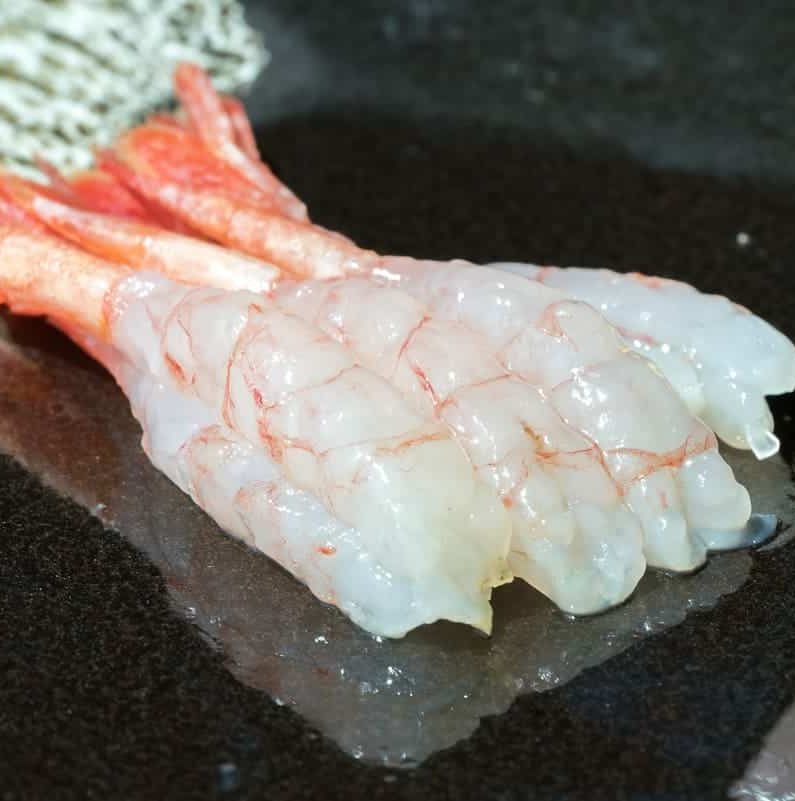
Sustainability of Amaebi
Amaebi is a type of sweet shrimp that is found in coastal waters around the world. It is a popular seafood delicacy, and its sustainability has become an important topic among fishermen, conservationists, and consumers. While some argue that the sustainability of amaebi populations is at risk due to overfishing and habitat degradation, others point out that sustainable management practices are helping to protect these species from extinction.
The following practices are employed to minimise bycatch:
- Using nets with small mesh sizes that allow juveniles to escape
- Fishing during times when particular species are not present
- Discarding unwanted catches back into the sea alive
- Employing sorting grids on board vessels which allow unwanted catches to be sorted from target species
- Utilising selectivity devices such as separator panels which allow juveniles to escape but keep larger specimens inside the net
- Using dedicated fishing gear specifically designed for catching amaebi only
These practices help ensure that only targeted species are caught while minimising any damage caused to non-targeted species or habitats. Furthermore, they help maintain sustainable fish populations in the wild and keep ecosystems balanced.
Amaebi As Food
Amaebi is a delicacy that is as delectable as it is sustainable. Its sweet taste and tender texture make it a highly sought-after seafood item worldwide. Like honey dripping off a spoon, its succulent flavour has captivated people for centuries.
As food, amaebi are typically eaten raw or served lightly cooked with some seasoning. It can be paired with sushi, sashimi, and other Japanese dishes like chirashi-zushi and oshizushi. The sweetness of the shrimp is further enhanced when it’s lightly cooked in sake or sprinkled with salt or soy sauce. In addition to being an appetiser or main course dish, amaebi can also be found in other forms, such as deep-fried tempura or panko-breaded amaebi katsu.
Amaebi can provide a nutritious addition to one’s diet due to their high protein levels and essential fatty acids such as omega-3s and omega-6s. They are also low in calories and fat while providing healthy amounts of vitamins B12 and E and zinc, iron, potassium, magnesium, phosphorus and selenium.
A four-ounce serving of amaebi contains 13 grams of protein and only 140 calories. These nutrients make them ideal for those looking for a healthy but tasty meal option.
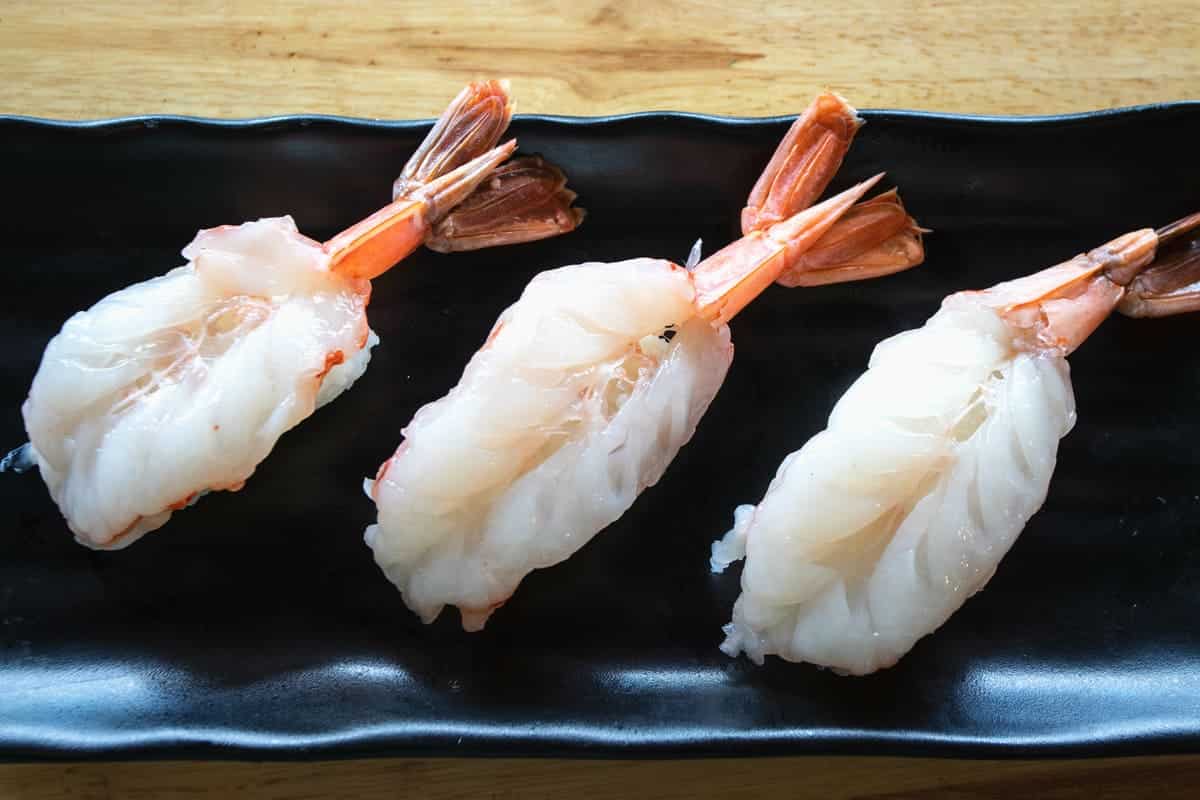
How To Prepare Sweet Shrimps Amaebi
Fortunately, the process is relatively simple for those wanting to create amaebi at home.
First, the fresh raw shrimp should be washed and patted dry before lightly sprinkling it with salt. This helps enhance the flavour while removing any dirt or debris that may have stuck to them. The shrimp can then be skewered onto wooden sticks in pairs and cooked over an open flame until they are lightly charred on the outside and cooked inside.
Alternatively, they can be fried in oil or butter until golden brown, slightly crispy on the outside, and still succulent on the inside.
Once cooked, amaebi are best served immediately with a garnish of lemon or lime wedges or other accompaniments such as soy sauce or wasabi. The warm smokiness of the charring and the delicate sweetness of raw shrimp make for a truly delicious dish that will delight even the pickiest eater.
A fresh amaebi is transparent and clear. Freshness is compromised if the tails curl into their bodies and they turn pink. Check the head for blackness when buying Amaebi to see if the meat is deteriorating. Black spots are almost nonexistent on the best quality Amaebi sushi.
Best Side Dishes Paired With Amaebi
As the adage goes, ‘variety is the spice of life’, especially regarding amaebi.
Amaebi is typically served as part of a multi-course meal, so it’s important to know what side dishes pair best with amaebi for the most complete and flavourful experience.
When pairing side dishes with amaebi, it’s essential to consider both flavour and texture. Rice dishes are popular accompaniments because they provide a neutral base for the other flavours to stand out. Steamed white rice or seasoned sushi rice can be used, but brown rice can also add an earthy flavour.
Vegetables such as steamed broccoli or edamame are good choices because they provide some crunch and contrast to the softness of the shrimp. Pickled vegetables such as cucumber or daikon radish are also good choices because they offer a tangy counterpoint to the sweetness of the shrimp.
Finally, miso soup is a traditional accompaniment that adds depth and complexity to the meal with its savoury flavour.
When planning an authentic Japanese meal featuring amaebi, many different side dishes can be served alongside it for a delicious and balanced experience. By carefully selecting ingredients that complement each other in terms of flavour and texture, you can create a memorable meal that will please even the most discerning palate.
Popular Amaebi Recipes
Sweet shrimp, or amaebi, is a delicacy enjoyed in many countries worldwide. It has a unique flavour and texture, making it an ideal choice for creating delicious recipes. With its sweet and succulent taste, amaebi can be cooked in many different ways to bring out its best flavours. Popular recipes include tempura, sushi, steaming, boiling, and serving with sauces such as soy sauce or ponzu.
For those who love seafood dishes, amaebi is an excellent option as it pairs well with many side dishes such as rice or vegetables. The sweetness of the shrimp goes beautifully with the savoury notes of other ingredients, which helps to bring out the natural flavours of both. Try adding chilli flakes or lemon juice for an added flavour kick. Not only will this give your dish more depth, but it will also add a nice zing to balance out the sweetness of the shrimp.
Conclusion
Overall, amaebi provides a healthy source of nutrition with plenty of flavour and versatility. Whether you choose to try them raw or cooked, or if you decide to attend the Annual Amaebi Festival in Japan, these sweet shrimps are sure to provide a unique culinary experience!
